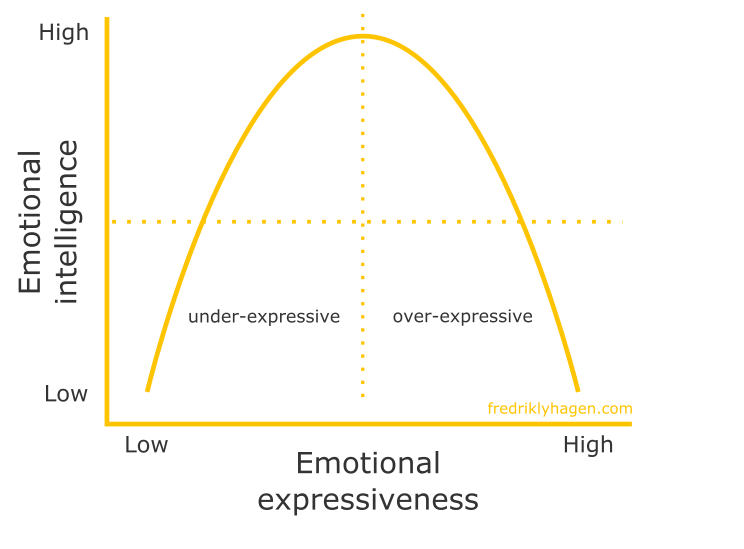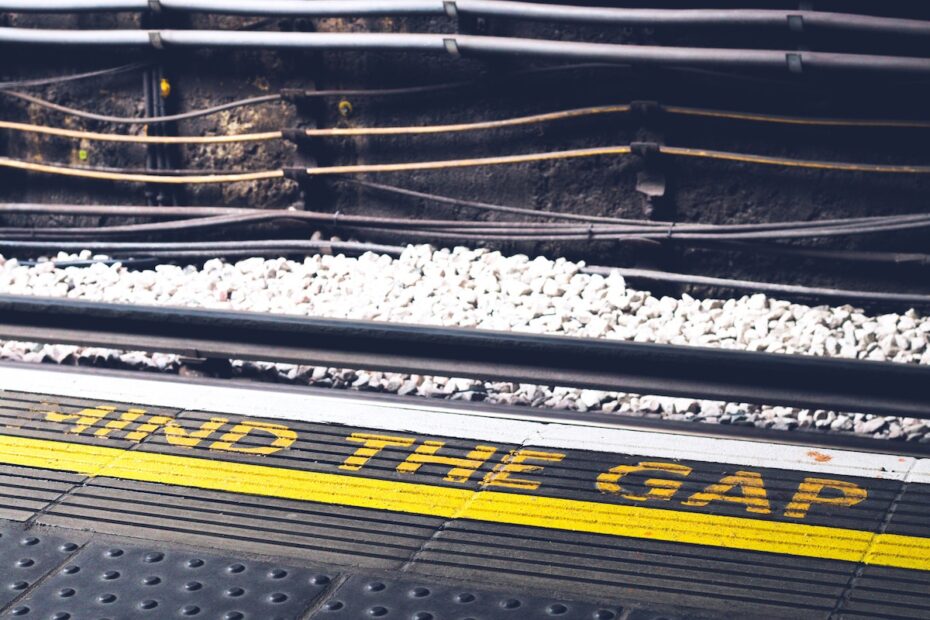When I lived in London studying at the Musician’s Institute my favourite past-time as a poor student was to take the Underground to a station in an area I hadn’t visited before and walk back home to Bayswater experiencing the vibe of the different neighbourhoods I passed through.

I was quite fascinated by the Mind the Gap announcements. Wondering which stations would announce it and how large the gap between the train the platform had to be to warrant this warning? And how often would people get stuck in between?
Mind the Gap stayed with me long after leaving London as a trigger to my memories of London, my exploratory walks and all the time I had to reflect on these walks.
In retrospect, these lonely walks were formative for who I am today, a kind of reflective practice much needed at the age of 21, lonely and poor in city full of temptations, having challenged the approved narrative of success by taking a gap year between my Bachelor degree and my Master studies in business.
Much later, as I began my 2nd career working with leaders on self-awareness, authenticity and purpose, Mind the Gap has become central to my life again.
Let me explain.
You may have been hired on your cognitive abilities, but it’s your emotional intelligence that will make you last
In my article on what executive coaching is I looked at the main reasons executives fail and the research points to three main reasons:
- Difficulty handling change
- Not working well in a team
- Poor interpersonal relationships
All of these directly point back to the leader’s ability to handle his/her own emotional state and their meaning-making capacity.
Leading business performance is not about what you know but about enabling others to create and for this you need to engage in conversations to unlock, nurture and amplify your own and others meaningful idea of fulfilment and channel energy into a pursuit of company objectives.
The foundation for engaging others is trust and trust is an emotion, a gut feeling. Trust is the product of emotional resonance between people so it requires you to be aware of and mindful of your own emotional state.
Being emotional is not the same as being emotionally intelligent
Sometimes being emotional is confused with being emotionally intelligent but they are neither the same nor mutually exclusive either.
Let me test an idea of how to explain this with you and please let me know in the comments if this resonates.

I’d like to think of the relationship between being emotional and being emotional intelligent as a bell curve with emotional expressiveness on the x-axis and emotional intelligence on the y-axis.
On the horizontal axis you have the spectrum of emotional expressiveness from complete poker face under any circumstances to instantly fully living out your emotions.
On the vertical axis you have level of emotional intelligence, from low to high, so at the top of the bell curve you find the highest level of emotional intelligence, perfectly balanced between being poker faced and living out your every emotion.
The further away, towards either end, you go from the top the less “intelligently” can you handle your emotions.
Actually, I feel intelligently is not the right word here. To me it comes across as coming from a place of inferiority and an attempt to elevate emotional intelligence to equal cognitive intelligence (IQ).
I’d argue it’s the other way around, that the ability to handle your emotional state has more impact on your experience of quality of life than your cognitive capacity.
Let’s save this thought for a separate article and for now consider:
Can we use the term emotional mindfulness rather than emotional intelligence?
Rest in the gap
The London Underground passengers are warned of the gap, in meditation we try to rest in the gap, and I suggest this is a critical skill for life and leadership.
The untrained mind reacts to stimuli. It’s the sudden expression of joy, love, anger, anxiety, sadness in reaction to event. Like the tennis ball thrown straight to the ground will immediately bounce back, the stronger the stimuli with the more energy will it bounce back.
However, we have an opportunity to create space between the stimuli and our reaction. To take in the stimuli, let it land, reflect on it and formulate a response. To mind the gap between stimuli and response.
“Discover inner space by creating gaps in the stream of thinking. Without those gaps, your thinking becomes repetitive, uninspired, devoid of any creative spark, which is how it still is for most people on the planet.”
Eckhart Tolle, A New Earth
By discovering this space you find a place to turn off your cognitive and emotional autopilot and explore what really is going on and if there are other perspectives on the situation.
You are training your mind to pause in the gap and do the what Kegan calls the subject to object move, which is to lift your reaction out from yourself (subject) and make it an object you can examine.
Imagine reaching into your heart with your hand, lifting out the feeling the stimuli triggered, and hold it in front of you.
Now you can examine the feeling as an object and ask yourself: “Interesting that I feel anger in this moment, I wonder what about this event (stimuli) triggered this? Which story that I tell about myself is being challenged?”
Great leaders don’t react, they respond.
A reaction is often fuelled by fear, fear that our ego-story will be take a hit, and few things are as threatening for the untrained mind.
“Threats to our standing in the eyes of others are remarkably potent biologically, almost as those to our very survival.”
Daniel Goleman
Being reactive as a leader invites all sorts of issues and reactive leaders tend to be exhausted and lonely.
For the leader tending towards control when challenged it may lead to lashing out, instant orders, and rash decisions. Their targets experience them as unpredictable, insensitive and micro-managing.
For leaders tending towards compliance when challenged it may lead to withdrawal, self-doubt, anxiety and instant compromise. People around the experience them as weak and get frustrated the leader doesn’t stand up for them and give clear direction.
For both extremes trust is eroded leading to the conversations dying and the leader becomes lonely, maybe further validating their respective ego-stories of “My people don’t come to me anymore so I need to step in and guide and control what they’re doing.” or “They don’t come to me because I’ve empowered them” or the self-critical voice “I knew it, they don’t take me seriously, I don’t belong”.
What happens when you respond instead of reacting?
When you mind the gap and then respond you are perceived as composed, considerate and deliberate, you operate from the upper half of the bell curve.
Interacting from this place you build trust, the foundation for engaging others and creating change.
Your response may not be what your counterpart would like to hear but a response invites to conversation whereas reaction tends to invite conflict.
As you’re learning to respond instead of reacting you’re likely to experience frustration.
Moving from over-expressive towards the centre
If your reactive tendency is in the bottom-right quadrant of the bell curve you may experience difficulty containing your emotions and you may want to practice the R.A.I.N. method, coined by Michele McDonald, to establish a step-by-step process for catching yourself.
- R=Recognise; Note (and/or label) with curiosity the feeling you are experiencing, for example “Interesting, I feel anger”.
- A=Accept; You may not like the feeling but it’s here and now so try to just accept it.
- I=Investigate; Deepen your awareness by doing the subject to object move mentioned earlier. How are the feelings affecting your body? Which mental stories are triggered?
- N=No identification; You are not your emotions so don’t identify with them. Emotions are like clouds in the sky, they come and pass, and even behind the darkest cloud the sun is still unconditionally sharing it’s warmth.
The clouds will pass. Be the sun.
Moving from under-expressive towards the centre
If your reactive tendency is in the bottom-left quadrant of the bell curve you may be perceived as insensitive and cold by others which makes it difficult for others to make sense of you and trust is held back.
On the inside you may experience frustration from bottling up emotions, slowly filling the bottle of unexpressed emotions towards an explosion. Maybe you create stories in your mind about the “hysteric people” and hold grudges.
The R.A.I.N. method is helpful for the those in the bottom-left quadrant but I think we need an acronym of the under-expressive as well so I’ll suggest R.A.S.P. as a step-by-step method for learning to be more emotionally expressive. The first two are the same as in R.A.I.N.
- R=Recognise; Note (and/or label) with curiosity the feeling you are experiencing, for example “Interesting, I feel frustration dwelling up”.
- A=Accept; You may not like the feeling but it’s here and now so try to just accept it.
- S=Share; Stay in the moment and articulate your feeling to the other person, for example: “I notice I get frustrated by this conversation.”
- P=Pause; Pause to let your sharing be received, feel into the other persons response to your sharing and R.A.S.P again. Resist going into solution mode until you have expressed your feelings to avoid leaving emotional residue inside. If you’re sharing is not acknowledged ask for a time-out to process the come back to the conversation.
Practice to mind the gap
The best way to practice resting in the gap is to have a reflective practice such as meditation.
Meditation is not about emptying your mind but about focusing your thoughts by following your breathing, on exploring a feeling, or checking in with each part of your body. When you notice your thoughts starting to wander off, bring them back to your object of meditation without judging yourself.
Don’t overextend yourself in your ambition to practice. Start with 5 to 10 min a day of stillness every day. Over time you’ll learn to rest the gap and to bring this experience with you into your everyday life being more mindful of the gap.
Let me know in the comments if the bell curve illustration and R.A.SP. resonates.
— — — — — —
Join my newsletter for exclusive content and notifications when I release new stuff!
I also host weekly virtual meditations in the Rinzai Zen tradition, on Mondays 20:00–21:00 CET and you’re welcome to join us. More info here.

